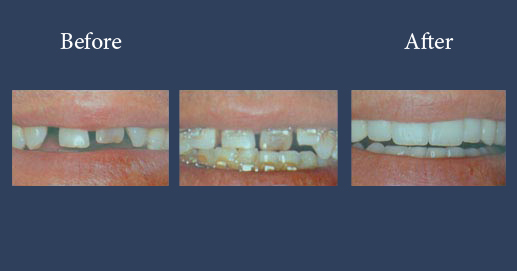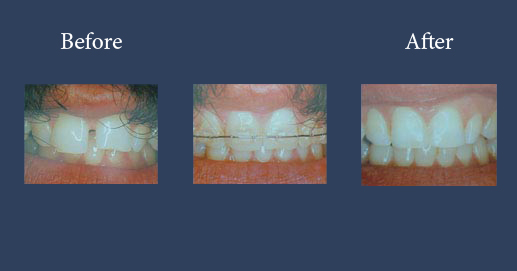Traditional Dentistry
CHEWING WELL MEANS LIVING BETTER ... AND SMILING MORE.
Orthodontics (literally “straight teeth”) is a scientific discipline that deals with the diagnosis, prevention and treatment of dental misalignment, jaw growth disorders and dentition defects.
Orthodontic treatments, hence, do not simply aim at promoting proper teeth alignment, but also at restoring an effective chewing function and promoting aesthetic balance of both lips and face.
In adults, orthodontics treats all smile defects caused by teeth misalignment and functional diseases of any anatomical parts affecting the occlusion.
As regards corrective options, due account must be taken that in adults malocclusions are often driven by alterations of the skeletal structure dependent on maxillary bones. Hence, in cases when teeth misalignment is coupled with skeletal disharmony, combined orthodontic-surgical treatment options must also be considered.
In children, orthodontics prevents dental misalignments (Preventive Orthodontics) or intercepts them at an early stage (Interceptive Orthodontics), but also prevents, timely intercepts and corrects any deviations in growth of the upper and lower jaws.
The tool that is used to achieve the treatment goal is the orthodontic appliance. Indeed, this appliance succeeds in gradually moving the teeth and aligning them in the desired final position.
The orthodontic appliance is an invaluable tool which has so greatly developed over the years that the common perception of it has changed. Indeed, at present some patients almost experience it as a “fashionable” item to wear.
Malocclusions
The cause of malocclusions lies both in the patient’s genetics and the so-called "environmental causes". Indeed, these two factors often combine in generating this pathology. Many environmental factors can deflect occlusion from its natural course. The most frequent ones have cultural roots and operate when the child's natural tendency to sucking is over-encouraged.
Indeed, repeated misuse of orofacial muscles, as in dummy or thumb sucking, can promote a number of alterations in the growth of molar teeth and in dentition development, whose visible reflections are disharmony in facial shape and in the aesthetics of smile.
The stages of orthodontic treatment
The diagnostic stage
The orthodontic treatment begins with an initial and accurate check-up in which the patient’s medical history, the patient or his family’s motivations and any functional, cosmetic, dental, occlusal, articular (affecting the temporomandibular joint), periodontal and hygiene problems are analysed.
After that, a number of fundamental diagnostic tests are performed:
-
dental radiographic survey
-
latero-lateral and postero-frontal teleradiograph of the skull
-
photographs of face and dental arches
-
dental casts
With all the material thus collected, cephalometric analyses and growth forecasts are performed and the treatment goals and plan are viewed.
The pre-interceptive stage
This treatment is performed at a very early age (4-7 years), when action needs to be taken to solve significant skeletal problems.
It lasts 12-18 months on average and makes use of removable and/or orthopaedic appliances.
The Interceptive stage
This treatment is generally performed at the age of 7 and 8 to solve skeletal and/or dental problems.
This stage lasts about 12-24 months and makes use of removable, orthopaedic and fixed appliances.
The end (or full) stage
Dental alignment, levelling and occlusion problems can be generally fixed starting from the age of 12.
The treatment lasts from 12 to 36 months and typically requires the use of fixed or invisible appliances.
Surgical orthodontics
After reaching the legal age, some important skeletal alterations may require the combined action of orthodontist and maxillofacial surgeon. In these complex cases, the duration of treatment varies from 24 to 36 months.






